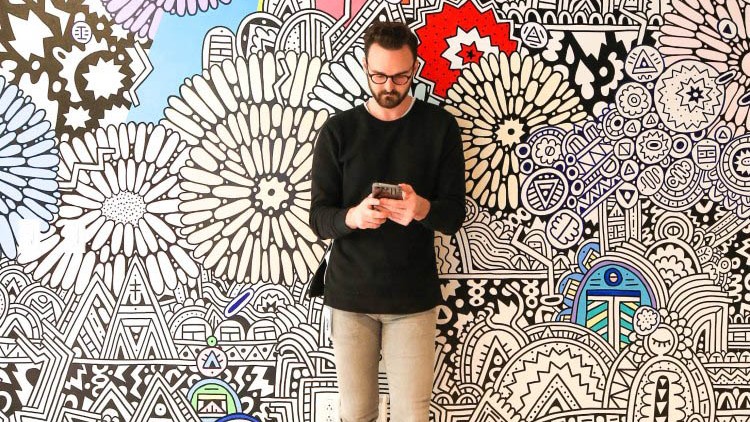
Wondering why your social feed seems to be nothing but ads these days? Well turns out, it's not just you. Recently, Meta CEO Mark Zuckerberg testified in court that time spent on Facebook and Instagram has "gone down meaningfully" and that user interactions have increasingly shifted toward messaging apps.
He also acknowledged that Facebook's "cultural relevance is decreasing quickly" and that its traditional model of friending has lost appeal, with many users' friend-graphs becoming "stale". I could go on, but you get the point.
This might sound like a shocking admission from a CEO, but let's face it: we already knew this, right? We've all been wandering around these increasingly desolate social platforms for months now, like those last customers in a closing-down sale, picking through the remnants whilst pretending everything's fine.
Facebook's feeds are full of AI-generated nonsense, your friend's uncle sharing mad conspiracy theories, and videos of people having public breakdowns in car parks. It's hardly the connected utopia we were promised.
Instagram, meanwhile, is so overrun with “creators” trying to go viral that posting an actual, real-life photo – one without facial filters and industrial-grade saturation – feels borderline illegal.
X (formerly Twitter, now just the symbol of a man having a very public identity crisis) has gone from snarky fun to a gladiatorial arena where everyone is shouting and no one is listening. And TikTok? Well, if you enjoy being screamed at by a Gen Z crypto bro in a rented Lamborghini while someone does eyeliner tutorials in the background, you’re in luck.
Sense of exhaustion
But here’s the thing: we were sold connection. Community. A place to be ourselves and "find our tribe". What we got, though, was an endless stream of people pretending to be more interesting, attractive or productive than they are, hoping the algorithm would smile upon them like a fickle god.
And most of us played along. Curating our personalities in grid format. Scheduling Stories like little content hamsters in a wheel of profit generation. Not profit for us, of course, but for the richest men on the planet.
But now, something’s changed. There’s a sense of exhaustion. Posts are less frequent. Stories more half-hearted. Captions increasingly read like cry-for-help haikus. Another day / influencer fatigue is real / this is an ad.
Maybe we’ve finally hit the limit of what our attention spans can handle. Maybe we’re tired of pretending we’re okay, while doomscrolling through someone’s #morningroutine featuring 12 steps and a green juice that costs more than a meal deal. Or maybe we just realised that spending our lives trying to be interesting to strangers online is—whisper it—deeply uncool.
The cool kids? They're all in the group chat now. It's all about WhatsApp groups. Instagram DMs. Discord servers with names like “feral girls only”. Oh, and a hundred other micro-networks that no one under the age of 25 has heard of. Which is exactly the point. Parental guidance? Not cool.

In short, actual human connection is happening away from the main stage, behind the velvet rope. Where the algorithm can’t get in and serve you 15 ads for waterproof trousers, just because you once thought about going hiking.
We’re reverting, in short, to how humans actually operate. Hanging in small groups, talking nonsense, sharing stupid memes, occasionally venting about work. No filters. No followers. Just vibes.
Lacking purpose
So what are the old platforms actually for now? Good question. On the face of it, Instagram is a gaudy shopping mall where sales reps make you feel inadequate for not owning any Labubu dolls. TikTok is a cursed television you can’t turn off. Facebook for RSVPing “maybe” to your cousin’s BBQ. And X is where you go to feel very, very angry for no reason at all.
The platforms haven’t died completely, of course. No doubt they're still making enormous amounts of money. But much like those Disney live action remakes, their souls have floated off somewhere, presumably to start a podcast.
What we’re left with are commercial shells. Ad delivery systems wearing the skin of their former selves. The bottom line is: they’re not social any more. Neither are they fun. They’re not even particularly useful. They’re just… there. Like decorative fruit in a hotel lobby. Looks fine, but bite into it and it tastes like packing foam.
The shape of things to come
What’s next? Probably nothing. And that’s fine.
Here’s a wild thought: maybe we don’t need to replace them. Maybe there isn’t a Next Big Platform. Maybe we don’t all need to scramble for followers and micro-fame like it’s a Victorian gold rush, but with less good hats.
Maybe it’s enough to just message your mates. Or read a book. Or stare out of a window and think about writing that screenplay.
Because if the slow, lingering demise of social media has taught us anything, it’s this. We don’t miss the posts; we miss the people. And it turns out we never really needed an app to find them.







